By David Dunlop
Here is a new twist with regard to the CSC Frigate Design Phase for the forum to ponder. I’ve seen new photos depicting the CSC. The photos were posted on DefenceHub.com by Ted Barnes, one of our forum contributors (https://defencehub.live/threads/canada-surface-combatant-csc-program.1650/page-6#post-315664). There is also a photo by ISI in the latest addition of Canadian Defence Review (CDR), VOL 30, Issue 1, in what appears to be an ad for ISI on p. 43 (http://www.canadiandefencereview.com/issues). Note the absence of X-Band illumination Radar. Where did these new graphics come from? First time seen. These pics also appear on recent ISI brochures as well. Are these new official government CSC Frigate photos or are these just AI graphics from ISI for effect? Is Macdonald Dettwiler Associates (MDA) no longer involved with the Illumination Radar system fit for the CSC Frigate or will there not be an AESA Illumination Radar fitted? If not, why not? Has the RCN decided to go ‘off-shore’ for this radar? Perhaps the French AESA Sea Fire 500 Illumination Radar system)? So many questions with no answers as yet!
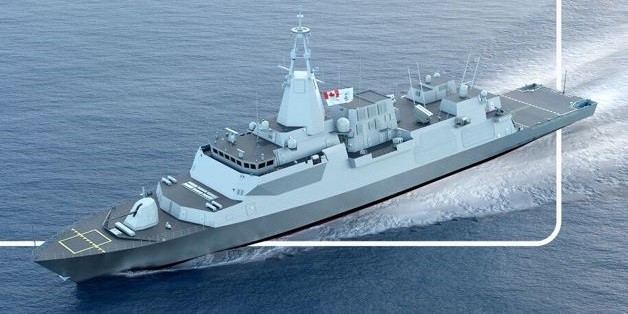
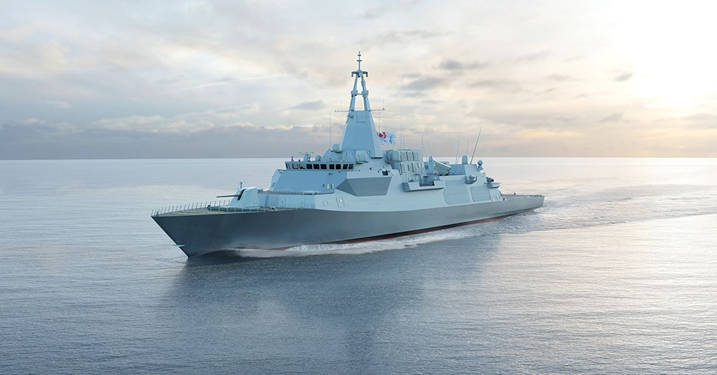
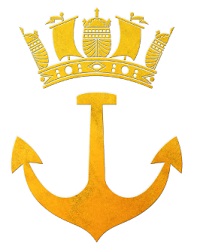
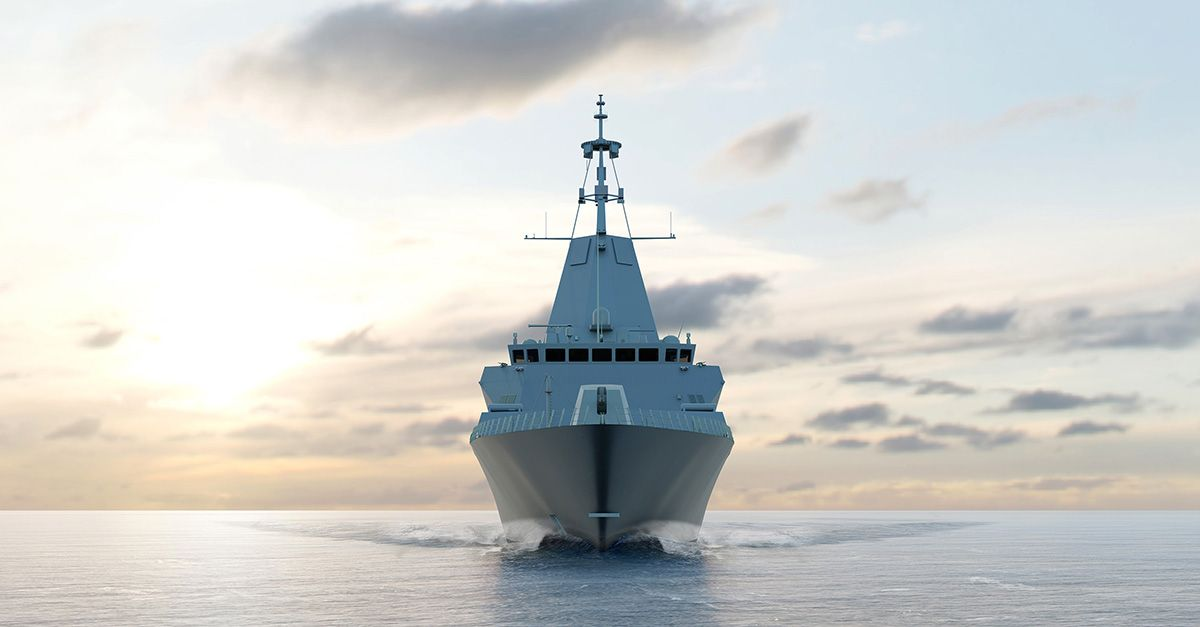
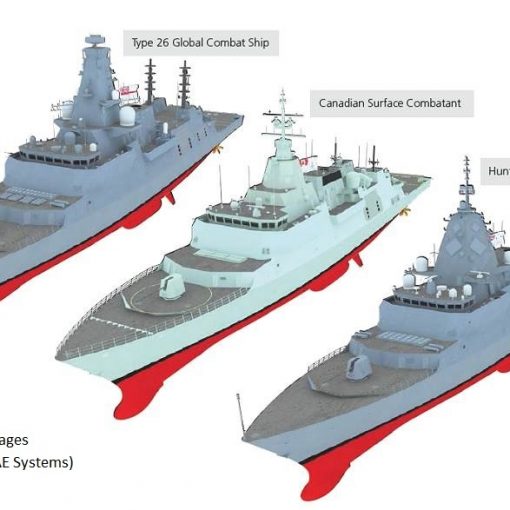
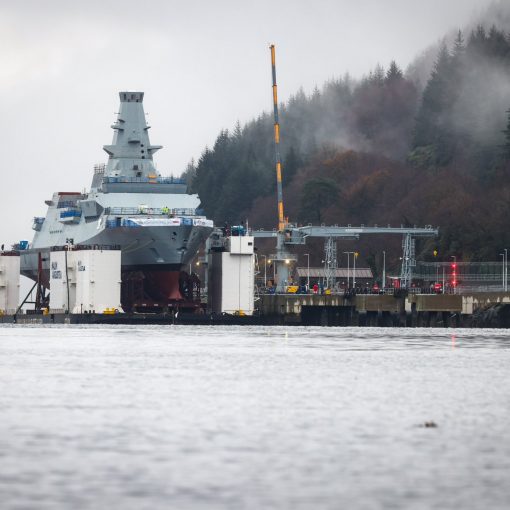
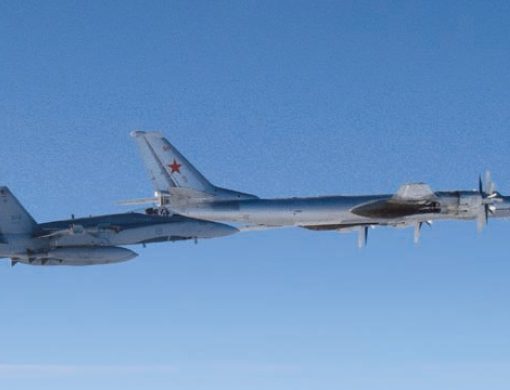

19 thoughts on “CSC: New Graphics? More Questions”
Hello David,
I did some reverse image searching and eventually found that BAE Systems Maritime posted those renders to their Linkedin page about four months ago, it would have just seemed like nobody picked up on that fact until recently with the CDR using them. They do not look like AI generated or modified renders, they look like official updated renders to me.
https://www.linkedin.com/posts/baesystemscanada_we-have-been-a-proud-member-of-the-canadian-activity-7115731858423701505-9l4_
This is conjecture so take it with a grain of salt however, I am fairly confident that the X-Band illumination radars were removed because they are not required anymore. All of the missiles used by CSC (CAMM, ESSM Block II and SM-2 IIIC) are active radar homing seeker types, meaning they do not require the X-Band illuminator to paint the targets for them. This is a significant weight saving measure as you can tell by the skeletonized mast shown in the renderings.
Hello Jimmy. You could take this with a grain of salt as well. What would happen if for any reason, the CSC Frigate lost the services of the SPY 7 (V 3) AESA Radar (down for maintenance etc.) during an incoming threat scenario and/or the missile you want to designate for targeting lost its active homing radar? What would the crew use for Air/Surface search for Fire Control then? I would contend for that very reason alone, we would need a backup to the SPY 7 with the X Band Illumination Radar system for medium to short range Air & Surface threats. The SPY 7 is a great long range radar so LM says, but an X Band Illumination Radar can give the CMS 330 System more granularity for medium to short range Air/Surface threats. A hand-off from SPY 7 to an AESA short to medium range X Band Illumination Radar just makes sense, right? Most modern Frigates/Destroyers have some sort of Fire Control Radar system to target in-coming missile threats and do not rely on LRDRs alone for this purpose. Give me some confidence that the RCN does not need this Illumination Radar to keep our sailors safe from harm and I will believe you. Until then, I say the X Band Illumination Radar is critical to the function of the CMS 330 & any in-coming threats. I await your response. Cheers!
Hi David,
If the overall SPY-7 system goes down during such a scenario or your individual missile loses its active homing aspect, you are effectively toast regardless. Some of these missiles retain their semi-active homing heads however, their primary active homing heads are well proven and the direction effectively all navies are moving in. As more and more nations move to mostly or entirely operating active seeker missiles, this trend of losing the outdated illuminator will continue. Alongside the fact that modern AESA radar systems like SPY-7 are incredibly reliable and able to work even with sections of the array damaged/inoperable. Such an overall scenario comes off as very unlikely and especially not worth keeping an entire separate illumination radar aboard for. The RCN seemingly removed the system because with these new missiles, it is an unnecessary link in the system. Reliability of the systems replacing the older style of semi-homing missiles and X Band illumination radars would mean that you are stuck paying for, maintaining and operating a vestigial system that would never be used except in an incredibly niche scenario.
SPY-7 like all other modern AESA arrays is not simply good at long range but can effectively deal with short to medium range targeting and tracking as well. Just because the X Band has been removed does not mean that the overall system is only capable of long range uses, such a statement is selling SPY-7 quite short. The modern active seeker missiles are launched on pre-programmed routes to intercept the missiles by AEGIS/CMS-330 and while able to accept mid-course guidance updates, will keep their own radar seeker off until they get close enough to acquire the target themselves. This system lets you remove the X Band illuminator alongside allowing you to engage far more targets than previously capable with guided semi-active missiles.
Hello Jimmy. Yes, I completely understand that with any modern LRDR AESA Radar like the LM SPY 7, SPY 6 (V1) or others can still operate with some degradation, even though the LM SPY 7 (V) 1 or Rathyon SPY 6 (V) 1 have not yet even been trialed on any Frigate or Destroyer at sea today (as yet). Don’t forget that any radar can be jammed no matter how successful it may be. All I’m saying is that for any missile threat scenario to have a successful outcome and save the ship’s company, some sort of close-in dedicated X Target Illuminator should have a chance to prove itself. How many air targets at once can the SPY 7 radar acquire, track, lock on to and target at long range as compared to say the French Sea Fire 500 Target Illuminator Radar at medium or short ranges (up to 400 NMs). With both the SPY 7 & SPY 6, we just don’t know as yet (or both LM & Raythyon will not say). With the Sea Fire 500 S & X Band Illuminator, the French say it can acquire, track, lock on and ready for fire at short to medium ranges and is capable of simultaneously tracking, without saturation, up to 800 tracks on its FREMM Class Frigates. It can initiate tracks as soon as an incoming threat has been detected, automatically increasing the refresh rate when necessary, and launch missiles with unmatched efficiency. Does the AESA LRDR SPY 7 (V) 1 or Rathyon AESA SPY 6 (v) 1 have these characteristics? The answer is, we hope, but just don’t know as yet as there is not an operational SPY 6 (V) 1 naval radar on any Arleigh Burke or Spanish Frigate (SPY (V) 2) and of course nothing on the CSC Type 26 Frigate in operation or on paper as yet; although Lockheed Martin (LM) says that the SPY 7 will out-perform the AB Batch III SPY 6 (V) 1. Still, I contend that an X Band Targeting Illuminator Radar is a great option to have in your back pocket should things ‘go-to-pot.’
David, given the bandwidth you burned up here and on other social media platforms about the illuminator radar I suspect you still won’t accept the decision to not have one on the CSC regardless of any information provided by us. The technology in the missiles and radars themselves clearly eliminate that need. You and others seem to now cast dispersions on the abilities of the Spy 7 itself by raising questions to cast doubt when these answers are well known by people who know. When warships went from sails to engines for the first time there were many who didn’t trust the engines and for quite some time insisted sails to be built as well. I suspect this is the same thing. In a few years you’ll see more and more combat suites with no illuminator radar at all.
Hello Jimmy. Re your 26 February 2024, 10:06 am post. It is more of a “Design Process” gone astray for far too long! We do not know what X Band Illuminator MDA would have been able to design and produce. Probably something much more innovative and successful than the Thales Sea Fire 500 or the APAR Block II X Band Illuminators could ever accomplish with their designs. But, we will never know. If this radar from MDA was indeed pushed out as part of the PDR, why have a taller mast in the first place? Go back to the original design to save even more weight (and money) instead of this “see-through” mast, which doesn’t make any sense at all. Let’s not have any “redundancy/outdated capabilities” as you say. I think both France & Netherlands would strongly disagree with you.
I believe this is the correct answer
Yes Jimmy the radar was eliminated because all the missiles it uses are active seeker. It wasn’t eliminated because of cost cutting, weight saving for sure but the spy 7 would be able to handle it. The great thing about the spy 7 is that it doesn’t need to be completely shutdown for maintenance.
Re Ted Barnes “25 February 2024, 9:44 am” reply: I for one am not “casting dispersions” (or aspersions!) on the abilities of the Spy 7 radar. I still believe it is an absolutely great radar from LM and exactly what Canada needs for the CSC Frigate and I have complete confidence in LM’s beliefs that it will out-perform the Raytheon SPY 6 (V) 1 radar as is. My concern is that this radar has not been proven on any combat ship thus far and we will only know how well it works at sea on the new Spanish class frigates down the road. Although I am older, I am still open to new ideas and capabilities as long as those capabilities have been well proven. Have you personally seen the capabilities of the SPY 7 in Alaska? Throughout my RCN career my job was working with the RCN’s Air Search radars (SPS 12/501); first operating them and then fixing them as a Radar Technician and other radars throughout my career so I know a thing or two about a lot of radars both older and the new S & X Band Technology systems being built today. French radar technology in the Sea Fire 500 Target Illuminator radar is a far, far cry from the days of sail as you say and is a proven technology at sea today. A back-up system like that would give most CSC crews more confidence in the SPY 7 no doubt.
David, it’s a radar with proven modern technology, it’s going to work and I have confidence in that and it will already be at sea before we get it and Canada will be observing. The Spy 7 is nothing like you ever operated or worked on. These are arguments generated years ago when the Spy 7 selection was announced because we are still stuck in our Cold War ways, so much so that the OPS room needs to change and a whole new way of doing business was needed to be implemented. This is not the radar like on the 280’s.
I don’t think that raising legitimate concerns about the performance, cost, delivery, and overall risk of the SPY-7 radar system and its related components is unwarranted. Despite assurances by some ‘in the know’ that all is well in this regard, the simple fact is we don’t know yet – nor will we know how well these systems perform for some time yet. No navy to date has a functioning, operational SPY-7 radar system aboard its warships.
All of the land-based testing and evaluation of these systems does not take the place of assessing them at sea in real world conditions. The land-based versions of the SPY-7 are plugged into reliable, near unlimited, power grids and do not have to contend with the realities of continuous salt water corrosion, finite and competing power supplies, shock and vibration from heavy sea states, frequency interference from other electronic systems, placement and crew safety, and so on. It is worth noting that Raytheon took over 10 years from initial contract authorization to get a certified SPY-6 radar operating on an Arleigh Burke destroyer last year. In the process, Raytheon had to overcome these same issues, and, as several US GAO reports attest, it was not a simple, trouble-free endeavour.
And to those who apparently have boundless faith in the ability of defence contractors and in their high tech naval systems, the simple truth is that we still do not know how well these systems would fare in conflicts against capable naval opponents. Modern naval systems are installed aboard warships which lack the armor, steel reinforcement, and general combat toughness of ships of yore. The relatively gentle grounding of the USS Port Royal, an AEGIS Ticonderoga-class cruiser equipped with BMD, on a coral reef outside of Honolulu Harbor in 2009, caused damage to the ship’s antennae and vertical launch cells and put the AEGIS radar arrays out of alignment. Imagine what an actual hit from even a crude Houthi ballistic missile, let alone a modern PLAN anti-ship cruise missile, would do these delicate electronic systems that modern warships rely so heavily upon.
Finally, raising these issues does not imply that most in this Forum believe that Lockheed Martin, an experienced and highly capable company, will not field an excellent radar system. Nor does it mean that those who raise such matters are rooting against these defence contractors and the RCN and are expecting – or even hoping for – them to fail. Far from it. However, as many of you with experience on warships know, progress will take time and setbacks are to be expected. How much time and at what cost is well worth exploring.
Hello Dan. You have put the ‘nail on the head’ as to what I have been trying to say from the beginning about these ‘new’ CSC graphics. Your comments are very informative and well worth taking stock of. The SPY 7 (V) 3 for the CSC Frigate may very well be the best investment Canada has ever made for the RCN’s future, but we just don’t know what we don’t know….yet. In my opinion, the government has given up on an X Band Illuminator too quickly and they should take another look at this option as the USN has done with the AB SPY 6 (V) 1 with Raytheon’s RSC. Yes, we will not really know until the SPY 7 (V) 2 Spanish Frigate class is put to sea and rigorously tested before it is installed on the CSC Frigate and all this will take time as the USN SPY 6 development has done (hopefully not 10 years of shipboard use) but we just don’t know exactly what the shipboard potential of this radar is ….yet. Thanks so much for your intelligent and thoughtful comments. Cheers!
Good catch, David!
I had heard about this possibility a couple of years ago, as a cost-saving measure.
Other scuttlebutt about possible changes to reduce costs: a different torpedo counter-measures system than originally proposed by Ultra; a change in the CSC’s degaussing capability.
In the absence of any DND information, rumours abound!
Hello Dan. A cost-saving measure as you say to save weight, will just about kill the LM CMS 330 Aegis systems requirements for Air-threat targeting. I’m sure MDA can build this Target Illumination AESA Radar and if not, the French Sea Fire 500 Target Illumination Radar will do just as well. So why stop MDA’s progress now? Most of my RCN Naval Combat Information Operators and Electronic Warfare Operators friends must be scratching their heads over this one. To see a mast with a big hole at the top is not what I was expecting to find out about when the LM Design Phase is nearly completed. The mast with this graphic now looks empty and kind of ugly! Me thinks there is something rotten-in-Denmark here! My curiosity was peaked when I saw the same CSC graphic in Canadian Defence Review’s (CDRs) most recent magazine edition on pg. 43 (2024 Vol. 30 Issue 1) with an ad for Irving Shipbuilding Limited (ISL) with this same CSC graphic in the ad. Ted Barnes who is a Naval Specialist and great contributor to CNR/Broadsides was the first to display this graphic on the “DefenceHub Forum” website a few days ago. DND & CG secrecy with this CSC project is at its worst with this one! Cheers!
David,
I think some of the confusion about the AN/SPY-7 stems from the fact that it was designed from the outset with BMD primarily in mind. However, in the separate USN Air and Missile Defense Radar (AMDR-S) competition, a central concern was the Radar Suite Controller (RSC) whose function is to merge the S-band and X-band radar information and to integrate this with a warship’s combat suite (i.e. AEGIS). In contrast, the US Missile Defense Agency was looking mainly for a Long Range Discrimination Radar (LRDR) for BMD, and did not require and X-band radar or RSC.
As you know, in the end Raytheon’s proposal won the AMDR-S competition and its radar was designated the SPY-6, while Lockheed-Martin (L-M) had prevailed in the LRDR competition and its radar was designated the SPY-7.
L-M subsequently started marketing the SPY-7 as a naval radar. L-M had great hopes for the SPY-7 based on its advanced technology in the GaN Transmit-Receive Modules (TRM) which it claimed produced comparable or superior performance to the SPY-6 at a cheaper cost and better reliability. After it lost in the AMDR-S competition, L-M protested the award decision and this resulted in a temporary halt to the program. In the end, L-M relented and Raytheon’s SPY-6 went ahead for the USN. In any case, one can speculate that the RSC is the main reason that Raytheon won the original AMDR contract and that the SPY-6’s integration functionality is an example of how the two radars differ.
L-M then went in search of other customers for its SPY-7, and found an enthusiastic taker in the RCN. Of course, with DND now paying for the lion’s share of the further development of the SPY-7 for use aboard warships, L-M’s focus is on the next generation destroyer program in the US.
While the SPY-7 may well turn out to be an outstanding naval radar, it will require some extra risk in getting other shipborne weapon systems to ‘play nice’ with it. Moreover, I have yet to hear a government explanation for why Canada decided its CSC, with all its emphasis on interoperability and integration with the USN and other navies, needed a different radar than the SPY-6 that was becoming the industry standard in the US. Kevin McCoy, the former head of ISI, testified before parliament as far back as February 2017 that this new high-end radar would be a major cost driver in the CSC program. Let us hope that the RCN will not rue its decision to go with the largely untested SPY-7 radar.
Hello Dan. I believe I understand the concepts of the SPY6 (V) 1 vs SPY 7 (V) 1 competition that went on between Lockheed Martin and Raytheon to supply the AESA radar for the Arleigh Burke refurbishment of Flt IIs & future Flt IIIs along with the SPY 6 (V) 3 systems for all their Carriers and the Constellation Class Frigates with the Raytheon Radar Suite Controller-(RSC-X Band Target Illumintor Radar) with Raytheon finally winning out. Their S-band AESA radar provides the volume search, tracking, ballistic missile defense discrimination, and missile communications, while the X-band radar (RSC) will provide horizon search, precision tracking, missile communication, and terminal illumination of targets. The S-band and X-band sensors also share functionality, including radar navigation, periscope detection, and missile guidance and communication. The SPY-6 family are scalable systems, with each sensor array assembled from Radar Modular Assemblies (RMAs) up to 37 modules, self-contained radar modules. Whereas the SPY 7 (V) 1 LRDR by Lockheed Martin with its scalable RMAs and its technological advancements does not require an X Band Illuminator (RSC) with its International Aegis Fire Control Loop (IAFCL) to properly function. My question to you is, why has both the RCN and Canadian Government been touting the X Band Illumination concept, to be built by MacDonald Detwiller Associates (MDA), in all of its “fact sheets” for the CSC Frigates right up until the end of 2023? Why keep this ruse of a Targeting Illluminator Radar (basically an RSC concept) being part of the CSC Frigate program in all of its graphics for all this time when they knew that a SPY 6 (V) 1 radar for the CSC Frigate was never an option, mainly because of CSC mast weight concerns? Why not be factual to everyone and just take the MDA X Band Illumination radar out as an option from the start? The more we seem to know about this program, the more secrecy we see from our own government!
It should not be an overall surprise that changes are being made to a design which is still undergoing development and refinement. The last infographic ‘fact sheet’ I remember seeing was in December 2022 before the mast changes we have seen on the render, I do not recall any new ‘fact sheets’ being released to the public in 2023. I would point out that this ‘ruse’ is very likely the design process at work, the process of evaluating the X Band Illumination radar’s viability very well could have been ongoing for years and only finally saw a decision. In that scenario, keeping the radar aboard as per previous iterations while waiting on a final decision is the logical thing to do. If an expensive and complex piece of equipment aboard one of these vessels becomes outdated or irrelevant before the design is finalized, it is the responsible thing to do in order to keep costs, weight and complexity down where possible.
I can guarantee if the RCN kept this system aboard and certain figures in the media got ahold of the fact we are wasting money, space and weight margins on redundant/out of date equipment, there would be articles written and people complaining about the RCN’s incompetency. I am usually a supporter of redundancy and backups aboard warships however, only when they are a worthwhile tradeoff. With the CSC already rumored to be hurting regarding weight, it comes off to me as a worthwhile choice to cut a redundant/outdated capability compared to keeping it for a rainy day.
This whole project is fast becoming nothing more than a laughable joke. Next graphic it will become even smaller or something else removed. Should take the main gun off to save weight and money. The government’s commitment to the navy is about the same as it is toward NATO. All bs. I really feel for CAF.
I have also seen this same info-graphic of the CSC Frigate design on the Naval Association of Canada’s (NAC) Fall 2023 Issue with Ads by both Lockheed Martin & BAE Systems on Pgs 29/39 respectively. See below:
https://www.navalassoc.ca/naval-affairs/starshell/